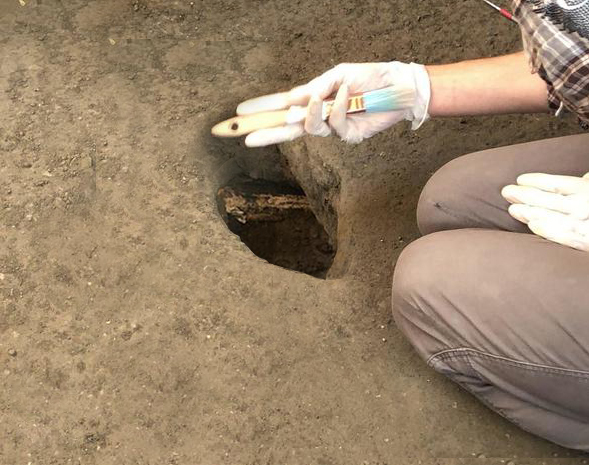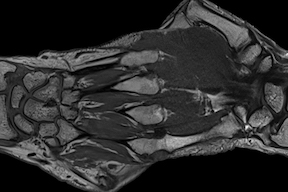ROME — Skeletal remains of what are believed to be two men holding hands have been discovered in Pompeii, officials at the Italian archaeological park said Saturday. Buried under 9 feet of grey ash, the men were likely fleeing the eruption of Mount Vesuvius nearly 2,000 years ago.
The arms were found near the ruins of a gatehouse at one of the entry points into the ancient Roman city destroyed by the volcanic eruption in 79 A.D. Several fully intact bodies were discovered in this area at a shallower depth in 2017. No other remains of the two men have been found at this site. Archeologists are continuing to dig in the surrounding area for clues to what they are calling "a mysterious find."
The deeper level at which the remains were discovered indicates that the men likely died from suffocation in the initial fall of ash. Pompeii officials believe the shallower bodies succumbed to a powerful volcanic blast that took place the following morning.
As has been done with other Pompeii remains, archaeologists poured liquid chalk into the cavity, or void, left by the decaying bodies in the ash and pumice that rained down from the volcano near modern-day Naples, demolishing the once thriving Roman port city.

------- Liquid chalk will soon be poured down this hole, encasing the bones which can then be removed for further study. Carlo Pugno / Ass. Press
The technique, pioneered in the 1800s, not only reveals the shape and position of the victims at the time of death, but preserves the remains for continued study and eventual display.
This is not the first time this casting technique has been able to bring to life the final terrifying moments in these ancient Romans' lives. The Two Maidens, discovered in 1914, are now-famous casts of two bodies clasped in an eternal embrace. Using CT technology, these bodies, previously believed to be women, were recently identified as two young men. The Pompeii archeological team plans to send the most recent remains through the same process in hopes of piecing together more of the story.
The arms were found near the ruins of a gatehouse at one of the entry points into the ancient Roman city destroyed by the volcanic eruption in 79 A.D. Several fully intact bodies were discovered in this area at a shallower depth in 2017. No other remains of the two men have been found at this site. Archeologists are continuing to dig in the surrounding area for clues to what they are calling "a mysterious find."
The deeper level at which the remains were discovered indicates that the men likely died from suffocation in the initial fall of ash. Pompeii officials believe the shallower bodies succumbed to a powerful volcanic blast that took place the following morning.
As has been done with other Pompeii remains, archaeologists poured liquid chalk into the cavity, or void, left by the decaying bodies in the ash and pumice that rained down from the volcano near modern-day Naples, demolishing the once thriving Roman port city.

The technique, pioneered in the 1800s, not only reveals the shape and position of the victims at the time of death, but preserves the remains for continued study and eventual display.
This is not the first time this casting technique has been able to bring to life the final terrifying moments in these ancient Romans' lives. The Two Maidens, discovered in 1914, are now-famous casts of two bodies clasped in an eternal embrace. Using CT technology, these bodies, previously believed to be women, were recently identified as two young men. The Pompeii archeological team plans to send the most recent remains through the same process in hopes of piecing together more of the story.
------- The Associative Press
Alarming discoveries made in most recent Pompeii find Nov. 2, 2020








